These are the best AV receivers we've tested to upgrade your movie nights at home
The best AV receivers tested for power, sound and connectivity — these amps deliver on movie night

If you're in the market for a step up from your old soundbar, then one of the best AV receivers is the way to go. Start your home cinema journey with a multi-channel option, so that you can get the best surround sound experience possible. You'll need some space, though — after all, you'll be placing dedicated speakers and maybe even a subwoofer around the room.
We really like the Denon AVR-X4800H. It packs in some excellent performance, while not costing the earth. If you want something that costs a little less, then the Denon AVR-X2700H is going to be your best option, with great specs for a more affordable cost.
So whether you're looking for something for your brand new home cinema or an upgrade to an ageing audio companion, these are the best AV receivers that you can buy today.
About the author

I oversee the audio content that goes up on Tom’s Guide, and maintain the site's buying guides for headphones, wireless earbuds, Bluetooth speakers, soundbars, and more. I have spent more than 20 years testing audio equipment for my own enjoyment, and was previously the audio editor for iMore. There's nothing more I love than jamming out to my favorite tunes on audio equipment of different prices and sizes.
What is an AV reciever?
An AV reciever is a kind of amplifier that's designed for home cinema and movie watching. You plug it into your TV with an HDMI cable, and then it takes the audio signal, and processes it for seperate speakers. You need to have speakers for an AV reciever to work — it's a kind of go-between device.
You could have as many speakers as you like, although there's a minimum of two. Everything from a normal stereo (2 speakers) up to a much larger surround setup (7.1 and above). It needs to be plugged into the power as well. Remember to budget for speakers with an AV reciever.
Do I really need an AV reciever?
This is a big question to ask yourself. Do you have the space for multiple speakers around the room? What kind of watching do you do? Can you budget for more than two speakers?
If the answer to any of those questions is no, then you don't need an AV receiver. I'd argue, in fact, that very few people need an AV receiver — you're much better off with the space-saving capabilities of one of the best soundbars, or the musical chops of a pair of HDMI-enabled powered speakers like the Kanto Ren.
But, if you love watching movies, you've got plenty of space, plenty of budget, and permission from your significant other, then an AV receiver might be just what you've been looking for.
The best AV receivers you can buy right now
Why you can trust Tom's Guide
Best AV receiver overall
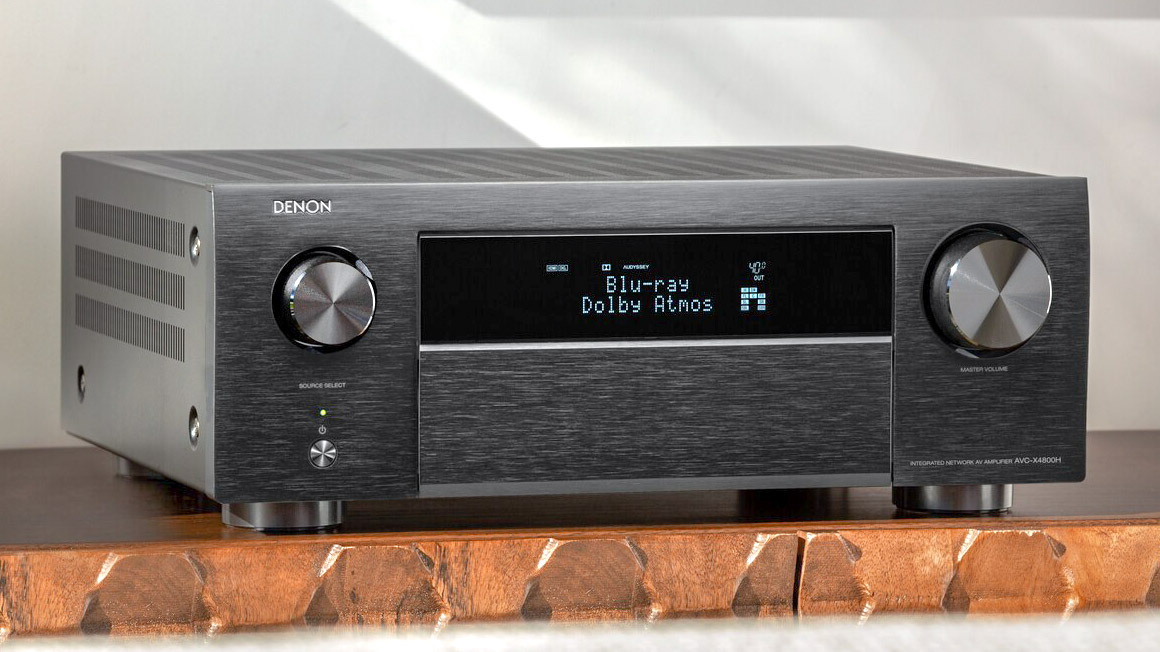

Specifications
Reasons to buy
Reasons to avoid
A sonic tour de force, the X4800H is a home theatre amplifier with long-term appeal. The provision of a full board of 8K /4K 120Hz HDMI inputs, and coverage of all the significant home cinema sound formats, ensures that this Denon amp will partner any display or source you might acquire for a long time to come.
It's not a small box by any stretch of the imagination, but that just means its filled with loads of impressive amplification internals. 9 channels of channels mean that you can attach a massive surround or Atmos system. The screen on the front makes it easy to read what mode its in, and then there's an easy setup mode when you plug it into your TV or projector. From there, you can setup all of the different settings and features to get the most out of your reciever.
The sound profile is best described as visceral. The soundstage is crisp and detailed, but there is a sense of power and precision as well; directional panning is totally convincing. While Denon rates on-board power at 9x 125W (into 8 Ohms) / 200W (into 6 Ohms), it sounds rather more muscular than that. This is a blockbuster amplifier designed for blockbusters but is also darn good with music, sounding light and agile with two-channel stereo and seamlessly immersive with 3D audio mixes.
- Read the full Denon AVR-X4800H review
Best value AV receiver
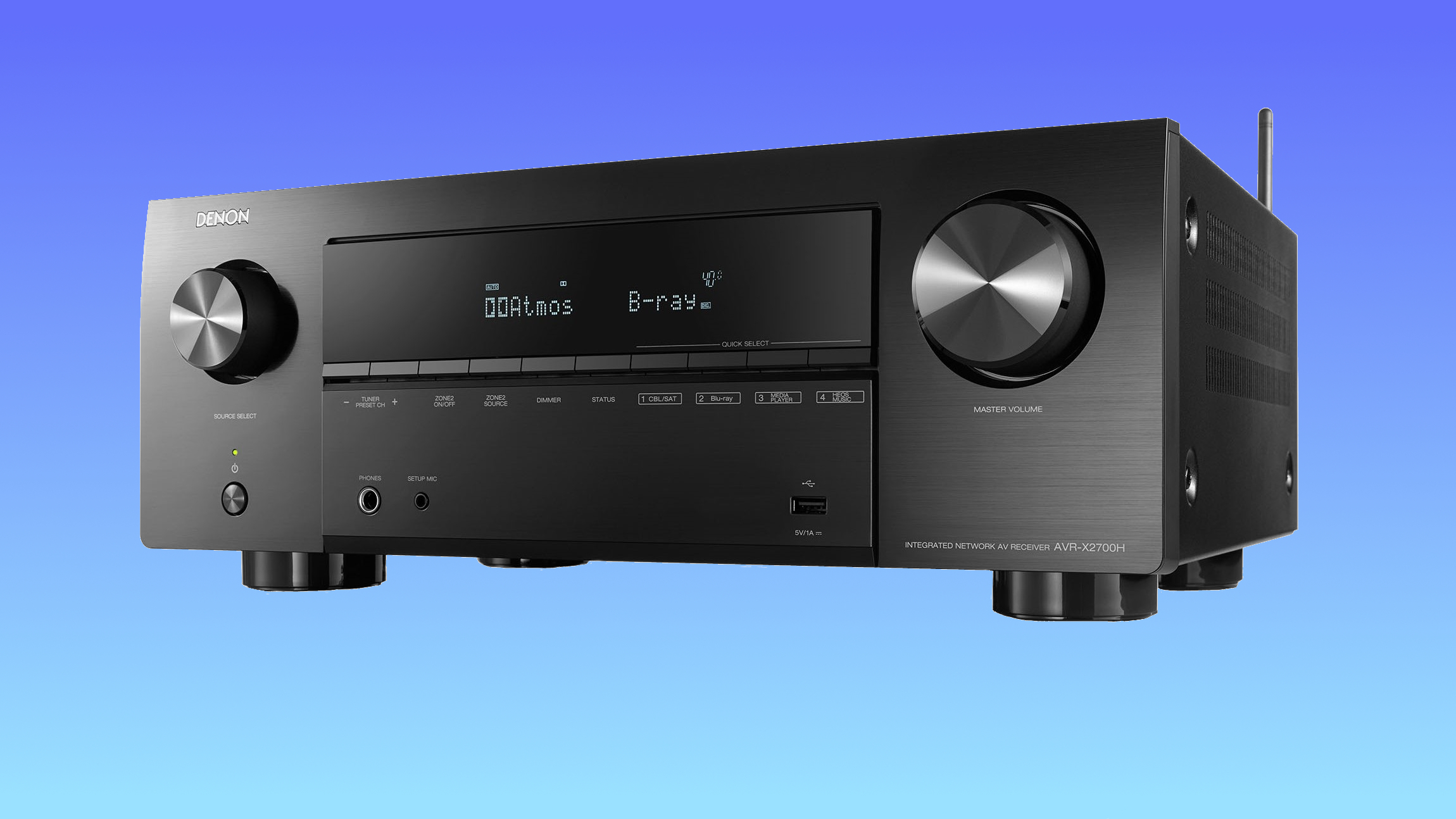

2. Denon AVR-X2700H
Our expert review:
Specifications
Reasons to buy
Reasons to avoid
Denon’s AVR-X2700H provides an affordable jumping-on-point for the brand’s 2021 X-series AV receivers. The price tag hints at budget components, but in a smaller viewing room (rather than a cavernous theater), it defies expectations.
While this one might not have as many channels, its still a great AV receiver for most people. There are plenty of HMDI ports on the back so you can hook up loads of devices, and there's an easy setup menu when you hook it up to your TV or projector. It's a solid piece of kit that gives your home cinema system a good centerpiece.
In our listening tests it gave a punchy delivery and has no problem with action-orientated soundtracks, plus it’s nuanced enough to portray subtle ambiance too. Power output is rated at 150W for multichannel, which is generous and it’ll support a 5.1.2 channel configuration or conventional 7.1 surround (depending on how you’ve set up your loudspeakers). There’s also 8K support, albeit via a single HDMI 2.1 input.
Best AV receiver for ultra-hi-res image support
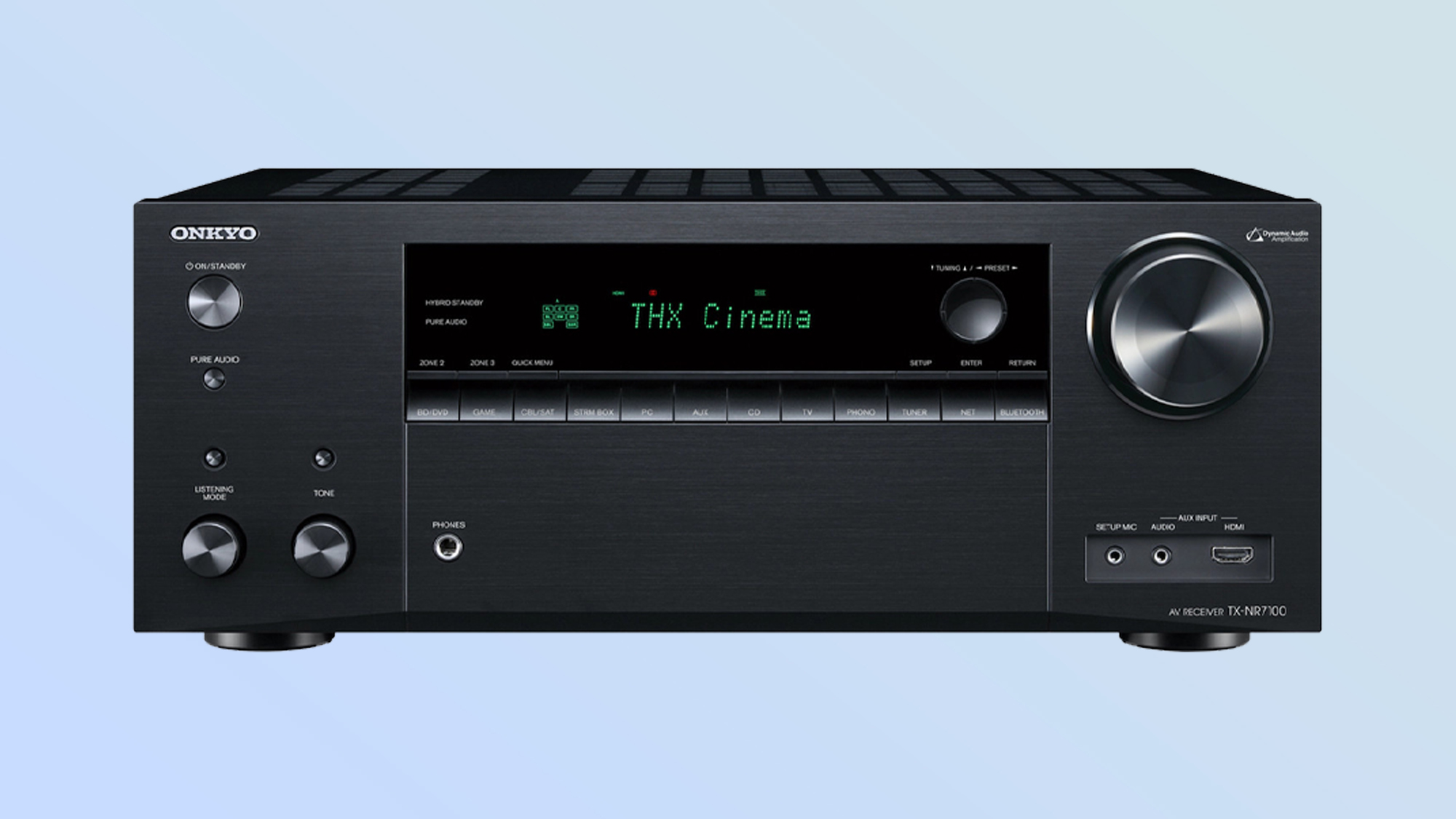
Specifications
Reasons to buy
Reasons to avoid
The TX-NR7100 is perfectly suited to movie and gaming fans alike. It has strong connectivity for hooking up ultra hi-res, or fast frame rate sources — all 6 HDMI inputs offer 8K and 4K 120Hz playback support. It boasts 100W per channel amplification and can be configured for up to 7.1.2 or 5.1.4 Dolby Atmos loudspeakers. There's also DTS:X compatibility, plus IMAX Enhanced certification and THX post processing.
Installation is aided by a step-by-step onscreen guide. It’s similar to what we’ve seen on the Denon AVR-X4800H and Marantz Cinema 50 AV receivers, albeit without the polish. There are two options when it comes to Room EQ: Onkyo’s own AccuEQ system, and Dirac Live room correction. Bothe deliver excellent results but Dirac Live was our reviewer's preference.
THX is a feature that has fallen from favour when it comes to home theater, but it still has value when it comes to upmixing. It brought a huge improvement in staging and storytelling to sci-fi based TV dramas as the THX processing adds scale and extra ambience to onscreen drama.
The AVR also handles complex sound sequences well with satisfying placement of objects and pans from stage left to right. It can sound ominous and heavy with deep rumbles rolling across the soundfield with thunderous LFE (Low Frequency Effects) you can almost feel. Stereo music is less effective and there are better AV receivers with audiophile sensibilities, but when it comes to value, features and overall performance for home theaters, the TX-NR1000 can deliver.
- Read the full Onkyo TX-NR71000 review
Best AV receiver for format support

Specifications
Reasons to buy
Reasons to avoid
The Marantz Cinema 50 is one of the most future proof home theater amps we've seen. The connectivity on offer is truly impressive with 8K and 4K @120Hz support, 6 HDMI inputs plus three outputs, and an impressive auto calibration system. Format support is extensive with Dolby Atmos, DTS:X and Auro 3D capable, as well as Sony’s 360 Reality Audio. It’s also IMAX Enhanced certified, which could come into its own when Disney+ starts streaming IMAX audio mixes.
If you’re looking for an AV amp that can deliver massive dynamics, with whip crack fast transients and a fearsome bass extension, the Cinema 50 doesn’t disappoint. It’s a tremendously exciting listen and steers gunfire shootouts beautifully, with effortless panning, and even at high volume there's no hint of strain.
It does music well too. Marantz’s lauded HDAM amplification circuitry is warm and melodious. In 2-channel mode, we’d say the Cinema 50 is comparable to a high quality mid range stereo amp, and with strong format support is as future proof as they come right now.
- Read the full Marantz Cinema 50 review
Best AV receiver with spatial audio support
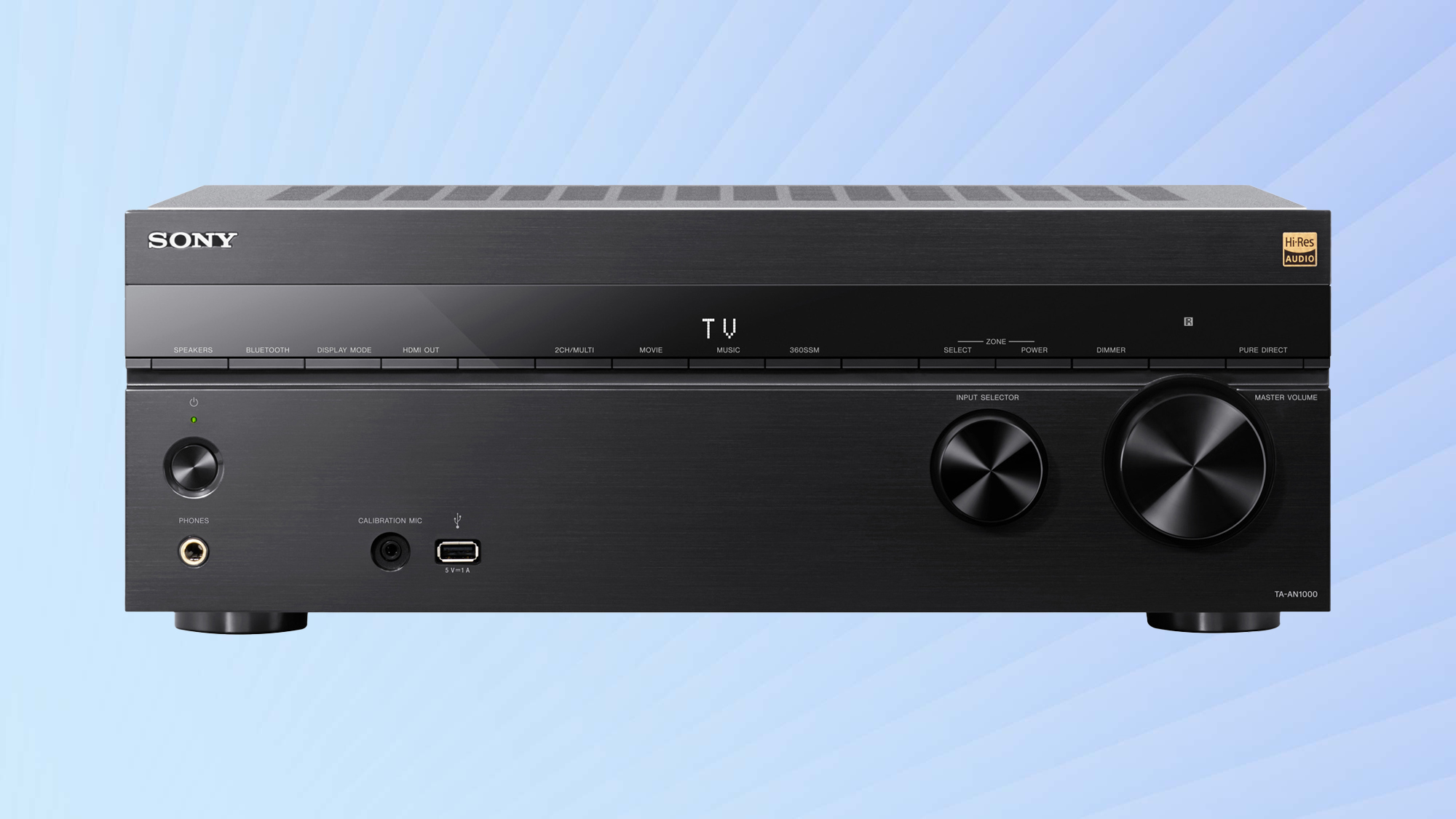
Specifications
Reasons to buy
Reasons to avoid
The STR-AN1000 is a 7.2ch AV receiver, which is not only Dolby Atmos and DTS:X enabled but it supports native 360 Reality Audio, and also boasts 360 Spatial Sound Mapping. The latter is particularly interesting, and effectively provides virtual speakers to fill in the gaps. It applies psycho acoustic processing to subjectively move actual speakers into more immersive virtual positions. It can be applied to stereo sources to create a surprisingly convincing multichannel effect, and overlaid on native immersive audio formats like Dolby Atmos, to virtually enhance the soundstage.
Sony quotes a power output of 2x 120W (into 6 Ohms), or roughly 85W per channel. It’s not a volume monster, but will suffice in a typically living room or studio apartment. It's an exciting listen, with smooth sonic steerage of objects and real sense of drama. It sounds bigger than its power specification implies, and handles blockbusters with authority. Just take care with the set up.
- Read the full Sony STR-AN1000 review
Best AV receiver for small spaces
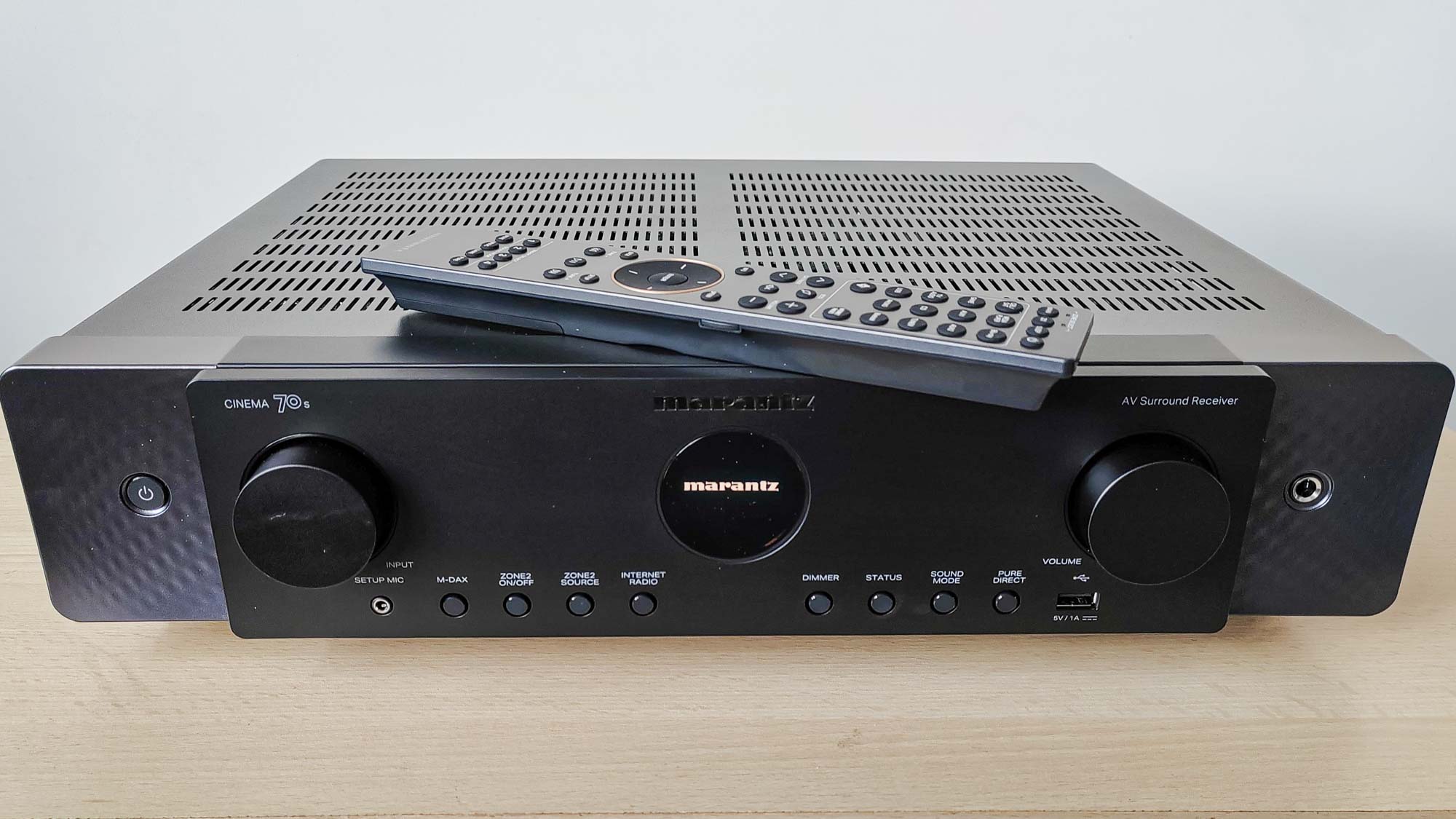
Specifications
Reasons to buy
Reasons to avoid
Available in silver-gold to U.K. buyers and black only in the U.S. and Australia, the Marantz Cinema 70S is a half-height lifestyle AV receiver perfect for smaller spaces and viewing rooms. The sonic signature has a warm sound that works with hi-res audio as well as movies and gamers.
You can run a 5.1.2 Atmos setup with a uniform 50W delivered across all 7 channels and was peerless with movie soundtracks. In Army of Thieves (Dolby Atmos, Netflix), our reviewer really got the sense that they were travelling into the inner mechanism of the safe when Ludwig Dieter lays his hands on the lock, during the safecracking competition. The clicky travel of the dial is crisply delineated against the symphonic score, which rises all around.
Hooked up to a Fire TV stick listening to Dolby Atmos music mixes from Tidal, our reviewer was thrilled at just how seamlessly the 360 presentation was. Billy Porter’s "Break A Sweat" places the listener firmly in the middle of the dance floor, with horns in the surround, the vocal dead center and the main beat gyrating across the LCR. In our 5.1.2 configuration, there were no sonic gaps or dips with any kind of content, just a totally immersive listening experience.
- Read the full Marantz Cinema 70S review
Specs compared
| Header Cell - Column 0 | Power output (claimed) | Dolby Atmos/DTS: X support | HDMI ports | Phono stage (MM) |
|---|---|---|---|---|
Denon AVR-4800H | 9x 125W | Yes | 7x in; 3x out | Yes |
Denon AVR-X2700H | 7x 150W | Yes | 6x in; 2x out | Yes |
Onkyo TX-NR7100 | 9x 100W | Yes | 6x in; 2x out | Yes |
Marantz Cinema 50 | 9x 110W | Yes | 6x in; 3x out | Yes |
Sony STR-AN1000 | 7x 85W | Yes | 6x in; 2x out | No |
Marantz Cinema 70S | 7x 50W | Yes | 6x in, 1x out | Yes |
Marantz SR6015 | 9x 100W | Yes | 7x in; 3x out | Yes |
How to choose the best AV receiver for you
Buying something as complex and multi-talented as an AV receiver can be overwhelming to a casual consumer, so if you’re serious about transforming your sound output into something more theater-like, start educating yourself on the necessities by familiarizing yourself with the things to consider.
Configuration
Something to know right out of the gate is that most seven-channel AV receivers support a speaker configuration of 5.1.2, which is the standard 5.1 surround layout with two additional height/up-firing speakers. Models that feature nine channels of amplification can be used for either 5.1 with four Dolby height speakers (5.1.4) or 7.1 surround with two height channels (7.1.2). Speaker models such as those in the new Klipsch Reference series could make a great partnership for a home cinema setup, and has several upward-firing height speakers to meet Dolby Amos requirements.
Connectivity
Finding the best AV receiver isn’t just about HDMI inputs. Sure we like plenty of inputs, but the number of outputs are important too, particularly if you plan on running both a flatscreen and a projector in the same room.
If you're considering an AV receiver as a connectivity hub for a music system as well as movies, then be sure to check out our guide to the best turntables for any budget. Many of the receivers available today come with a built-in moving-magnet phono stage to enable vinyl playback from any of the record decks we've tested.
Resolution and frame rate support
Do you need 8K or High Frame Rate HDMIs? If your AV receiver is unlikely to have a games console connected then the answer is no. In which case there’s some great deals to be had on AVRs with regular HDMI 2.0 inputs.
Surround sound
Dolby Atmos compatibility is a given (and by default that means you’ll get DTS:X too), but how many channels do you need? Given the option, 9 channels always trump 7, because it opens up more speaker options such as 5.1.4 or 7.1.2, for example.
Don’t have a full Dolby Atmos home theatre loudspeaker setup? Look for a model that offers height virtualisation technology, so you can enjoy an immersive audio experience even when you don’t have a full set of physical speakers.
Power output
Power isn’t just about roof-raising volume, and even if you’re not lucky enough to have a dedicated movie room, a model with big amplification makes sense. A high power output means an AVR can deliver dynamic transients, and pressure load a space without clipping or strain.
Surround sound explained
One of the most confusing things about any kind of home cinema system is the surround sound channel numbers you'll often spot on the box. What do they mean, and what do they tell you about the receiver that you're about to buy?
Those numbers denote the channels that are available to use with the reciever. It's broken up into three different sections. The first number are the surround channels. The is for subwoofers. The final number are the height channels, for Dolby Atmos and DTS:X.
Say, for example, that you've got a reciever that's got a 7.1.4 surround sound setup. That means you've got 7 surround channels, that you could use for a centre, left and right stereo, two side surrounds, and then a pair of rear surrounds. You've then got a single subwoofer channel. Finally, you've got 4 height channels that you can place around the room in pre-determined Atmos spots. You can use Atmos testing videos to make sure all your speakers are in the right place.
How we test AV receivers
When testing models for inclusion in our best AV receivers page, we play a range of media — including movies, music and games — to evaluate overall sound quality performance. We also test any companion software that may come with an AV receiver, and factor in how easy it is to set up and use each receiver with a reference speaker system.
Other features we consider include the different kinds of connectivity options, all of which determine how well it will work with your home entertainment setup. We also take into account power output, the number of supported audio channels and subwoofer outputs, and available processing software for decoding movie soundtracks as well as their ability to handle music sources — all factors that greatly affect how each speaker will sound in your living room.
Once we complete our testing, we rate each AV receiver based on our five-point system (1 = worst, 5 = best). If a product hits nearly every mark, it’s awarded an Editor's Choice badge.
Get instant access to breaking news, the hottest reviews, great deals and helpful tips.

Tammy and her generous collection of headphones have found a new home — Tom's Guide! After a two-and-a-half-year stint as iMore's resident audiophile, Tammy's reviews and buying guide expertise have more focus than ever on Tom's Guide, helping buyers find the audio gear that works best for them. Tammy has worked with some of the most desirable audio brands on the planet in her time writing about headphones, speakers, and more, bringing a consumer focussed approach to critique and buying advice. Away from her desk, you'll probably find her in the countryside writing (extremely bad) poetry, or putting her screenwriting Masters to good use creating screenplays that'll never see the light of day.
